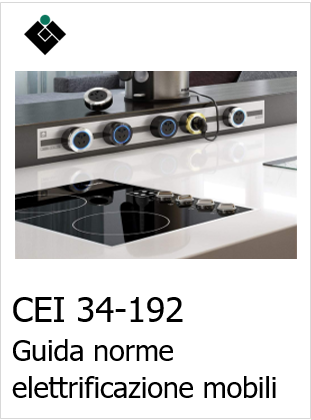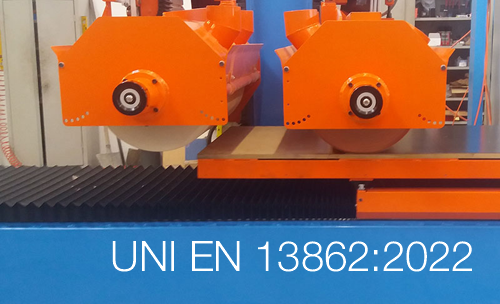Informazione tecnica HSE / 25 ° anno
/ Documenti disponibili:
45.559
/ Documenti scaricati: 34.449.994
/ Documenti scaricati: 34.449.994
ID 21509 | 14.03.2024 / Download Scheda
Hazardous energy, whether deriving from electrical, mechanical, hydraulic, pneumatic, chemical, or thermal sources in machinery and equipment, is the basis of a longstanding issue in many industries.
Due to the high frequency of casualties resulting from the unexpected release of hazardous energy and related machine start-ups, substantial measures have been taken by employers, unions, trade associations, and government to mitigate accidents, including the development of the ANSI/ASSP Z244.1-2016 standard.
Injuries from Hazardous
Energy Hazards deriving from the unexpected startup or release of stored energy are abundant.
If a steam valve is automatically turned on, it can burn workers who repair a downstream connection in the piping. A jammed conveyor system, if suddenly released, can crush a worker. The range of possibilities with hazardous energy release leads to a variation in potential injuries, including electrocution, burns, crushing, cutting, and lacerating, amputating, or fracturing body parts.
As such, accidents caused from hazardous energy release remain alarmingly high, injuring around 50,000 workers each year.
Lockout, Tagout, and Alternative Methods for Controlling Hazardous Energy with ANSI/ASSP Z244.1
ANSI/ASSP Z244.1-2016 – The Control of Hazardous Energy Lockout, Tagout and Alternative Methods exists to provide a reliable standard practice that, if followed correctly, can assure safety from hazardous energy in machinery. The ANSI/ASSP Z244.1-2016 standard establishes guidelines for the control for hazardous energy associated with machinery, equipment, or processes that could do harm to the personnel.
Specifically, it does this by establishing lockout, tagout, or alternative methods to control the hazardous energy. It is applicable to many activities, including erecting, installing, constructing, repairing, adjusting, inspecting, unjamming, set up, testing, troubleshooting, cleaning, dismantling, servicing, and maintaining machines, equipment, or processes. ANSI/ASSE Z244.1-2016 or ANSI/ASSP Z244.1-2016? Some past users of this standard might be confused but the designation of ASSP in the title.
Due to the ANSI-accredited standards developing organization (SDO) the American Society of Safety Engineers (ASSE) changing its name to the American Society of Safety Professionals (ASSP), all newly revised and reaffirmed ASSP standards now bear the new standard designation in their titles. Therefore, the ANSI/ASSE Z244.1-2016 document is identical to the reaffirmed ANSI/ASSP Z244.1-2016 (R2020).
Responsibilities for an ANSI/ASSP Z244.1 Lockout System
At the core of these specifications is the user and the supplier of the machinery, and the interaction between these two groups determines the success of the lockout system.
The supplier, who is responsible for designing, building, integrating, and installing machines, equipment, or processes, should incorporate all applicable provisions of this standard into their products, so that the user can assure compliance through the establishment of a protection program.
The third group bearing responsibility during this process is the personnel, who should comply with the hazardous energy control program.
Hazardous Energy Control Program
A hazardous energy control program consists of the following activities: identifying (assigning responsibilities, identifying tasks), operational procedures (documented procedures, for hazardous energy control, provisions for hazardous energy control interruption), implementation (selecting protective materials, communication and training), and program maintenance (monitoring/measuring, auditing of program elements).
Of course, in the control of hazardous energy, the design phase of the machinery plays a key role, since risk assessment conducted during this stage can determine the suitability of the equipment for its intended purpose. Hazardous energy control methods selected by the supplier can include identification of energy that is necessary to perform a given task(s), elimination of hazardous energy sources whenever practicable, control of hazardous energy, or control methods.
For example, ANSI/ASSP Z244.1-2016 discusses energy-isolating devices, which are installed as integral parts of a machine as a means of preventing the transmission or release of energy. The standard specifies that these devices be conveniently located, clearly identified, capable of being locked, and evaluated to determine their suitability for their intended purpose.
Using Lockout or Tagout to Control Hazardous Energy
As for the control process itself, lockout is preferred. Under lockout, hazardous energy is isolated by securing a lockout device (or devices) of suitable construction placed on an energy-isolating device that prevents the inadvertent re-energization of machinery or equipment. Lockout devices should be placed by each authorized participating person. While lockout is the preferred method, there is no stipulation in the standard indicating that it needs to be utilized for compliance with ANSI/ASSP Z244.1-2016. However, there are two exceptions to this.
They are when no risk assessment has been completed or the tasks and/or hazards are unknown. Otherwise, tagout (the less-preferred method) can be put into use. Under tagout, hazardous energy is isolated by using tags secured to an energy-isolating device that prevents the inadvertent re-energization of machinery or equipment. Every participating authorized person should either place an individual tag at each isolated source or be named in a group tagging method.
The tags display the name of person placing the tagout, the contact information for the authorized person, a statement not to operate the equipment, and a statement not to remove the tagout device. Other aspects of the procedures detailed in ANSI/ASSP Z244.1-2016 serve to establish the methods of the standard as reliable in preventing accidents from hazardous energy.
The American National Standards Institute (ANSI) administers and coordinates the US voluntary consensus standardization system. ANSI is also the U.S. member body to ISO and (via the USNC) IEC.
ANSI
Collegati

ID 16304 | 01.04.2022 / Preview in allegato
Ed. Febbraio 2022
Questa Guida si applica ai mobili e compleme...

Infrastrutture del gas - Esempi applicativi per la classificazione dei luoghi con pericolo di esplosione per la presenza di gas in applicazione della CEI EN 60079-10-1:2016-11
Data...

ID 16870 | 17.06.2022 / In allegato Preview
UNI EN 13862:2022 - Macchine per taglio di superfici piane orizzontali - Sicurezza
L...
Testata editoriale iscritta al n. 22/2024 del registro periodici della cancelleria del Tribunale di Perugia in data 19.11.2024